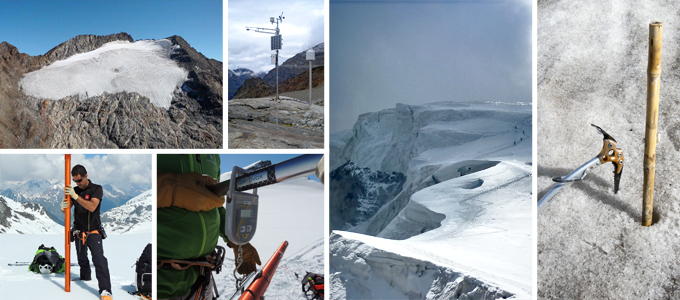Since the last century, European Alps experienced a pronounced warming of about 1.2 °C. Alpine glaciers lost about 2/3 of their volumes since the Little Ice Age.
Glaciers react quickly to climate warming losing mass and modifying their morphological characteristics and dynamics. Glacial front retreat, glacial lakes formation and instability of hanging glaciers are just few examples of climate warming impacts. This high sensitivity makes glaciers effective indicators of climate change impacts.

Monitoring glacial variations provide useful insights to evaluate the effects of climate change impacts on mountain environment. Glacier shrinking affects water resources, hydropower production and water availability for irrigation purposes downvalley. That's why since 2000 we started a glacier monitoring program. Now our main activities are focused on:
We use cookies on our website. Some of them are essential for the operation of the site, while others help us to improve this site and the user experience (tracking cookies). You can decide for yourself whether you want to allow cookies or not. Please note that if you reject them, you may not be able to use all the functionalities of the site.
